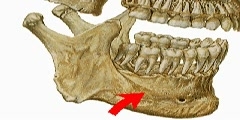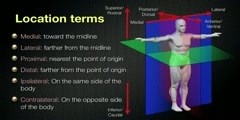Lec 16 - Frontal Cyclones
"Lec 16 - Frontal Cyclones" The Atmosphere, the Ocean and Environmental Change (GG 140) Mid-latitude frontal cyclones gain energy from temperature gradients rather than latent heat release as is the case with convective storms. They form in the belt of westerly winds and therefore generally move west to east in both the northern and southern hemispheres. A mid-latitude frontal cyclone develops from a kink in the polar front, and eventually warm and cold fronts develop around a low pressure center to form the storm. An example of this type of storm is a nor'easter, which commonly occurs in New England and is named for the northeasterly winds that precede the storm's arrival. Weather forecasting is also discussed. 00:00 - Chapter 1. Mid-latitude Frontal Cyclones 13:01 - Chapter 2. Lifecycle of a Mid-latitude Frontal Cyclone 26:02 - Chapter 3. Nor'Easter 33:02 - Chapter 4. Southern Hemisphere Cyclones 35:29 - Chapter 5. Weather Forecasting Complete course materials are available at the Open Yale Courses website: http://oyc.yale.edu This course was recorded in Fall 2011.
Video is embedded from external source so embedding is not available.
Video is embedded from external source so download is not available.
Channels: Environmental engineering
Tags: Lec 16 - Frontal Cyclones
Uploaded by: yaleatmoocenchng ( Send Message ) on 13-09-2012.
Duration: 43m 16s
Here is the next lecture for this course
Craniotomy brain surgery in the right fr ...
01:38 | 12583 viewsRight Frontal Craniotomy Brain Surgery
01:38 | 8334 viewsLec 18 - Seasons and Climate Classification
45:20 | 3511 viewsThe Skull
01:42 | 13641 viewsParts of the Brain
03:17 | 31952 viewsHeart Model II - Surface Anatomy
03:24 | 12729 viewsGlabellar reflex or myerson sign
00:24 | 14316 viewsSinusitis animation video
01:25 | 6234 viewsLec 67 - Introduction to Clinical Occlus ...
21:00 | 5657 viewsLec 13 - Global Climate and the Coriolis ...
49:42 | 4722 viewsLec 14 - Coriolis Force and Storms
49:26 | 3587 viewsSpatial relationships and anatomical Plan ...
07:05 | 4838 viewsLec 18 - Aggression II
01:45:07 | 3428 viewsNo content is added to this lecture.
Lecture list for this course
Lec 1 - Introduction to Atmospheres
Lec 2 - Retaining an Atmosphere
Lec 4 - Vertical Structure of the atmosphere; Residence Time
Lec 5 - Earth Systems Analysis (Tank Experiment)
Lec 6 - Greenhouse Effect, Habitability
Lec 9 - Water in the Atmosphere I
Lec 10 - Water in the Atmosphere II
Lec 11 - Clouds and Precipitation (cloud chamber experiment)
Lec 12 - Circulation of the Atmosphere (Exam I review)
Lec 13 - Global Climate and the Coriolis Force
Lec 14 - Coriolis Force and Storms
Lec 18 - Seasons and Climate Classification
Lec 19 - Ocean Bathymetry and Water Properties
Lec 20 - Ocean Water Density and Atmospheric Forcing
Lec 22 - Ocean Currents and Productivity
Lec 24 - Ice in the Climate System
Lec 25 - Ice and climate change
Lec 26 - Isotope Evidence for Climate Change
Lec 28 - Global Warming (continued)
Lec 29 - Global Warming (continued)
Lec 30 - Climate Sensitivity and Human Population
Lec 31 - The Two Ozone Problems














